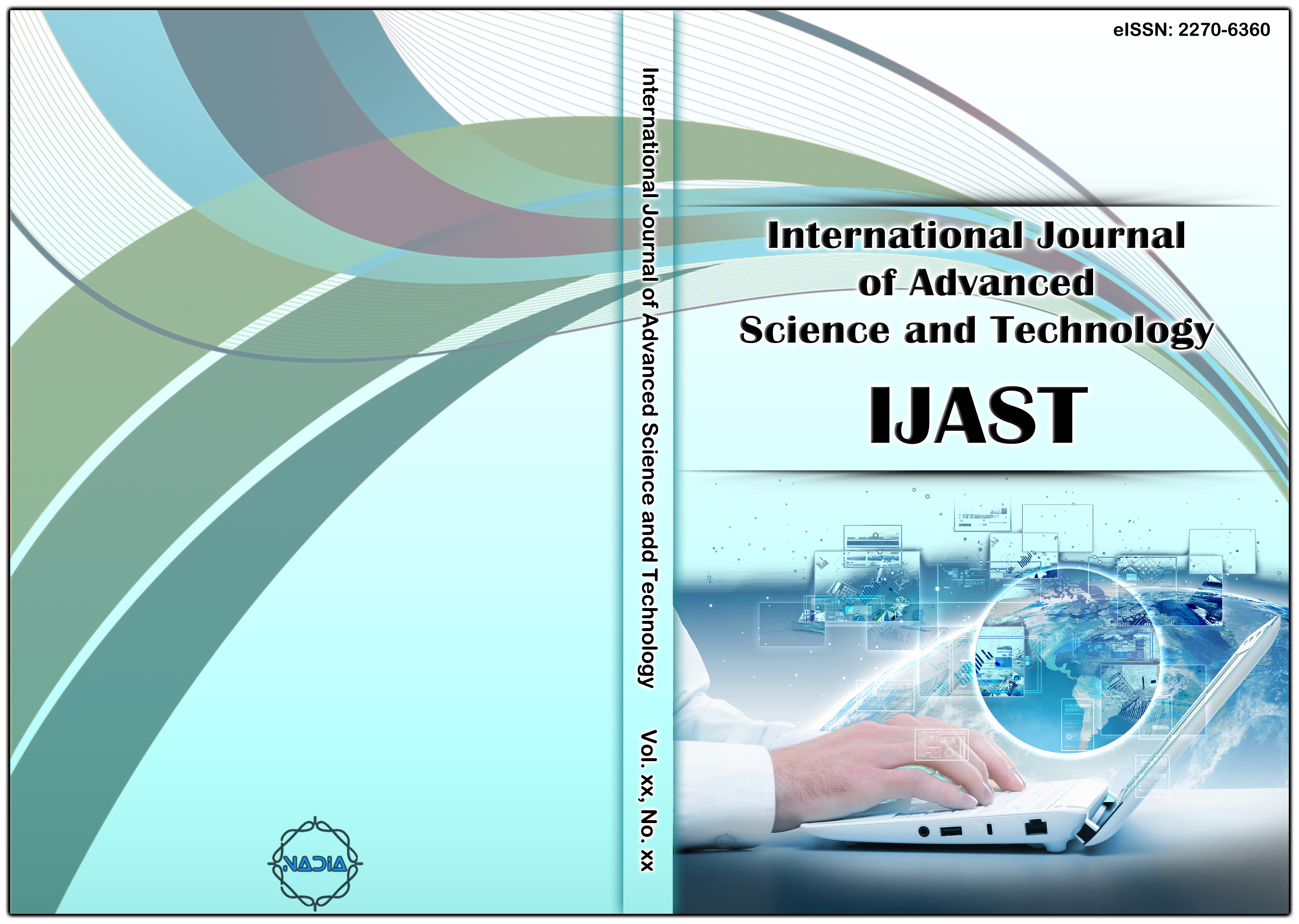[1] N. Gershenfeld, R. Krikorian, D. Cohen, The internet of things, Scientific American 291 (4) 76–81, New York, (2010), USA.
[2] D.G. Yoo, D.H. Lee, C.H. Seo, S.G. Choi, RFID networking mechanism using address management agent, in Proceedings of NCM 2008, Gyeongju, September, (2009), South Korea.
[3] M. Botterman, for the European Commission Information Society & Media Directorate-General, Networked Enterprise & RFID Unit, D4, Internet of Things: An Early Reality of the Future Internet, Report of the Internet of Things Workshop, Prague, May (2010), Czech Republic.
[4] Chun-Te, YinWu, Kun-De Lin, “Construction of the Enterprise-level RFID Security and Privacy Management Using Role-Based Key Management”,IEEE International Conference on Systems, Man and Cybernetics, (2011).
[5] Xingxin Gao, Zhe Xiang, Hao Wang, Jun Shen, Jian Huang, Song Song, "An Approach to Security and Privacy of RFID System for Supply Chain," IEEE International Conference on E-Commerce Technology for Dynamic E-Business, (2012).
[6] Shaikh, M. H “Analysis of Privacy Policies: Responses and Challenges. Experiences from Service Providers”, pp.1, Vol3, No.1, (2012).
[7] Haifei Li, Patrick C. K. Hung, Jia Zhang, and David Ahn, "Designing Privacy Policies for Adopting RFID in the Retail Industry", (2010), Japan.
[8] Ari Juels, "RFID Security and Privacy: A Research Survey, RSA Laboratories", (2009).
[9] Rezaei, M., Akbarpour Shirazi, M., & Karimi, B. (2017). IoT-based framework for performance measurement: a real-time supply chain decision alignment. Industrial Management & Data Systems, 117(4), 688-712.
[10] Pierre de Leusse, Panos Periorellis, Theo Dimitrakos, Srijith k.Nair, Self-Managed Security Cell, a Security Model for the Internet of Things and Services. First International Conference on Advances in Future Internet, (2009), United States.
[11] S. Goldwasser, "Multiparty computations: past and present," in Proceedings of the sixteenth annual ACM symposium on Principles of distributed computing, Santa Barbara, California, (2012), United States.
[12] A. C. Yao, "Protocols for secure computations.," in Proceedings of the 23rd Annual IEEE Symposium on Foundations of Computer Science, (2008).
[13] W. Du and M. J. Atallah, "Secure multi-party computation problems and their applications: a review and open problems," in Proceedings of the 2001 workshop on New security paradigms, Cloudcroft, (2008), New Mexico.
[14] B. Chor, E. Kushilevitz, O. Goldreich, and M. Sudan, "Private information retrieval," J. ACM, vol. 45, pp. 965-981, (2006).
[15] M. J. Atallah and W. Du, "Secure Multi-party Computational Geometry," in Proceedings of the 7th International Workshop on Algorithms and Data Structures, (2010), Berlin.
[16] R. Canetti, Y. Ishai, R. Kumar, M. K. Reiter, R. Rubinfeld, and R. N.Wright, "Selective private function evaluation with applications to private statistics," in Proceedings of the twentieth annual ACM symposium on Principles of distributed computing, Newport, Rhode Island, (2010), United States.
[17] Shu Yan, “Privacy Protection RFID Tag Reader Systems”, Ningbo University, December, Vol 19, No. 4, (2003), Kenya.
[18] Shaikh MH. Examining a Norwegian Clients Response over Information Security and Privacy Policy. Global Journal of Computer Science and Technology, Jun 23rd, (2015), Norway.
[19] Samarati P. Protecting respondents’ identities in microdata release.Proc of the TKDE’01, (2012), Finland.
[20] Chen Shao Wei, Rui Chen, Ling Li, a modified Hash-way function secure RFID authentication protocol, Computer System, pp-19, No. 3. (2010), China.
[21] Shaikh, M. H., Ssentumbwe, A. M., & Ansari, N. A, “Conserving Privacy Morals in an Innovativeness System via Functional Carnival Framework”, ARPN Journal of Systems and Software, Vol. 6, No. 1, June, (2016).
[22] Celik, Z. B., Fernandes, E., Pauley, E., Tan, G., & McDaniel, P. (2018). Program Analysis of Commodity IoT Applications for Security and Privacy: Challenges and Opportunities. arXiv preprint arXiv:1809.06962.
[23] Khan, M. A., & Salah, K. (2018). IoT security: Review, block chain solutions, and open challenges. Future Generation Computer Systems, 82, 395-411.
[24] Abdel-Basset, M., Manogaran, G., & Mohamed, M. (2018). Internet of Things (IoT) and its impact on supply chain: A framework for building smart, secure and efficient systems. Future Generation Computer Systems, 86, 614-628.
[25] Huh, S., Cho, S., & Kim, S. (2017, February). Managing IoT devices using block chain platform. In 2017 19th international conference on advanced communication technology (ICACT) (pp. 464-467). IEEE.
[26] Schulz, P., Matthe, M., Klessig, H., Simsek, M., Fettweis, G., Ansari, J., & Puschmann, A. (2017). Latency critical IoT applications in 5G: Perspective on the design of radio interface and network architecture. IEEE Communications Magazine, 55(2), 70-78.
[27] Yin, Yuyu Yin, Lu Chen, Yueshen Xu, Jian Wan, He Zhang, Zhida Mai. QoS Prediction for Service Recommendation with Deep Feature Learning in Edge Computing Environment. Mobile Networks and Applications. 2019. https://doi.org/10.1007/s11036-019-01241-7.
[28] Yuyu Yin, Lu Chen, Yueshen Xu, Jian Wan:Location-Aware Service Recommendation With Enhanced Probabilistic Matrix Factorization. IEEE Access 6: 62815-62825 (2018).
[29] Yuyu Yin, Yueshen Xu, Wenting Xu, Min Gao, Lifeng Yu, Yujie Pei:Collaborative Service Selection via Ensemble Learning in Mixed Mobile Network Environments. Entropy 19(7): 358 (2017).
[30] Yuyu Yin, Wenting Xu, Yueshen Xu, He Li, Lifeng Yu:Collaborative QoS Prediction for Mobile Service with Data Filtering and Slope One Model. Mobile Information Systems 2017: 7356213:1-7356213:14 (2017).
[31] Yuyu Yin, Fangzheng Yu, Yueshen Xu, Lifeng Yu, Jinglong Mu:Network Location-Aware Service Recommendation with Random Walk in Cyber-Physical Systems. Sensors 17(9): 2059 (2017).
[32] Yuyu Yin, Song Aihua, Gao Min, Yueshen Xu, Wang Shuoping:QoS Prediction for Web Service Recommendation with Network Location-Aware Neighbor Selection. International Journal of Software Engineering and Knowledge Engineering 26(4): 611-632 (2016).
[33] Kholoud Ibrahim AlQattan, Andri Mirzal: A Framework for Cloud-based E-Prescription in Healthcare Information System 9. International Journal of Cloud-Computing and Super-Computing, 5(2): 9-22 (2018).
[34] Kyongjin Kim:Trustful Mechanism for Sharing the Cost of Multicast Transmissions. International Journal of Urban Design for Ubiquitous Computing 5(1): 17-20 (2017).
[35] Dongjun Suh: Design and Pilot Implementation of a Knowledge Sharing Platform for Hazard Analysis and Disaster Management. Journal of Statistical Computing and Algorithm 2(2): 7-12 (2018).
[36] Emmanuel Kusi Achampong, Anthony Apio, Richard Opoku: The Use of Wearables in the Management of Chronic Diseases. International Journal of Wearable Device 5(2): 1-8 (2018).
[37] Siwoo Byun: Design of the Efficient Replication Management for IoT Service Environments International Journal of Web Science and Engineering for Smart Devices 5(2): 1-6 (2018).
